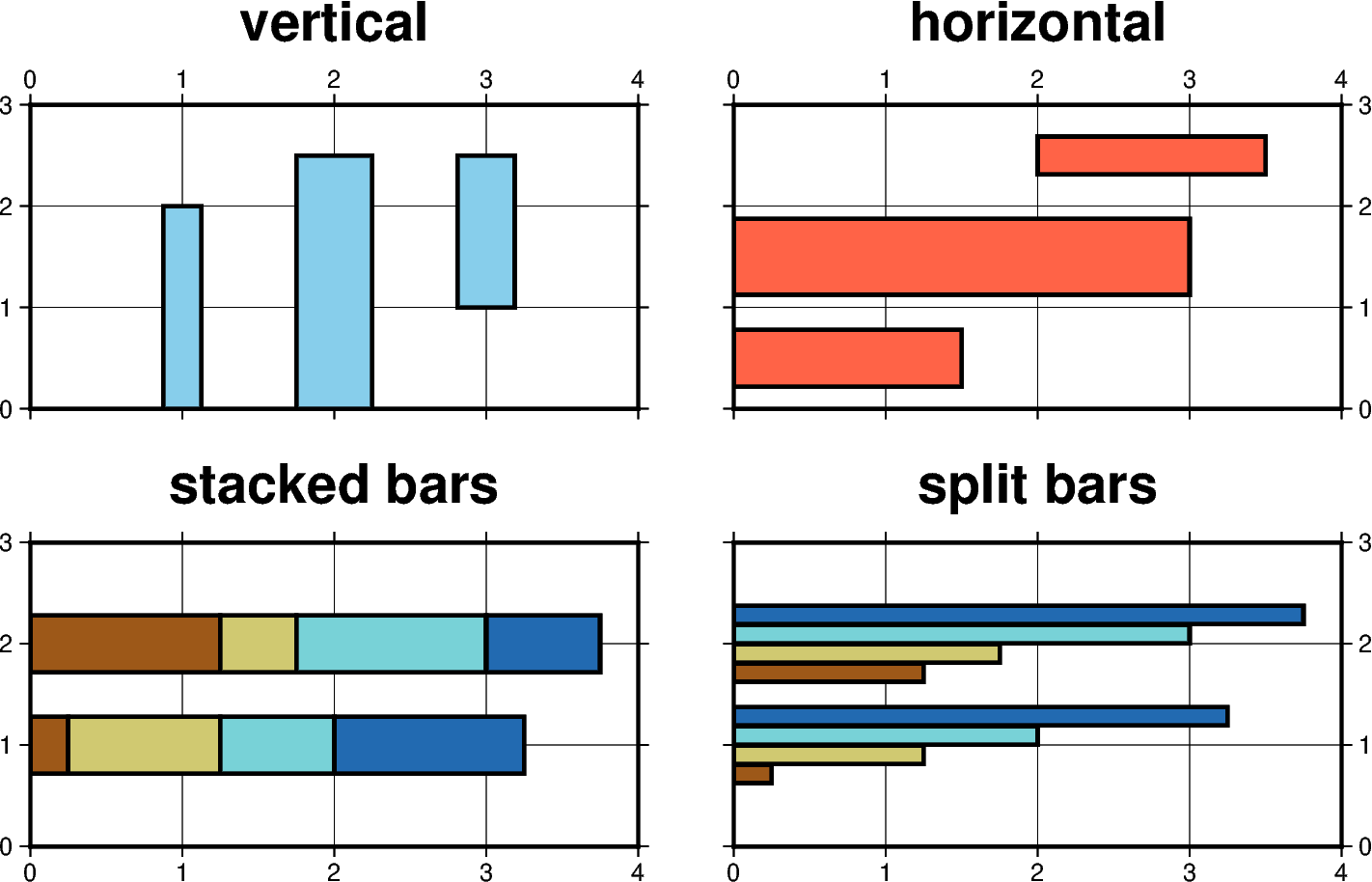Note
Click here to download the full example code
Vertical or horizontal bar
The pygmt.Figure.plot method can plot vertical (b) or
horizontal (B) bars by passing the corresponding shortcut to
the style parameter.

Out:
<IPython.core.display.Image object>
import pandas as pd
import pygmt
fig = pygmt.Figure()
pygmt.makecpt(cmap="roma", series=[0, 4, 1])
with fig.subplot(
nrows=2,
ncols=2,
subsize=("8c", "4c"),
frame=["ag"],
sharey=True,
sharex=True,
margins=["0.5c", "0.75c"],
):
pen = "1.5p"
with fig.set_panel(panel=0):
color = "skyblue"
fig.basemap(region=[0, 4, 0, 3], frame="+tvertical")
fig.plot(x=1, y=2, style="b0.5c", color=color, pen=pen)
fig.plot(x=2, y=2.5, style="b1c", color=color, pen=pen)
fig.plot(x=3, y=2.5, style="b0.75c+b1", color=color, pen=pen)
with fig.set_panel(panel=1):
color = "tomato"
fig.basemap(region=[0, 4, 0, 3], frame="+thorizontal")
fig.plot(x=1.5, y=0.5, style="B0.75c", color=color, pen=pen)
fig.plot(x=3, y=1.5, style="B1c", color=color, pen=pen)
fig.plot(x=3.5, y=2.5, style="B0.5c+b2", color=color, pen=pen)
# generate dataframe for plotting multi-band bars
data = {
"x1": [0.25, 1.25],
"y": [1, 2],
"x2": [1, 0.5],
"x3": [0.75, 1.25],
"x4": [1.25, 0.75],
}
df = pd.DataFrame(data=data)
with fig.set_panel(panel=2):
fig.basemap(region=[0, 4, 0, 3], frame='+t"stacked bars"')
fig.plot(data=data, style="B0.75c+i4", cmap=True, pen=pen)
with fig.set_panel(panel=3):
fig.basemap(region=[0, 4, 0, 3], frame='+t"split bars"')
fig.plot(data=data, style="B1c+i4+s4", cmap=True, pen=pen)
fig.show()
Total running time of the script: ( 0 minutes 3.570 seconds)